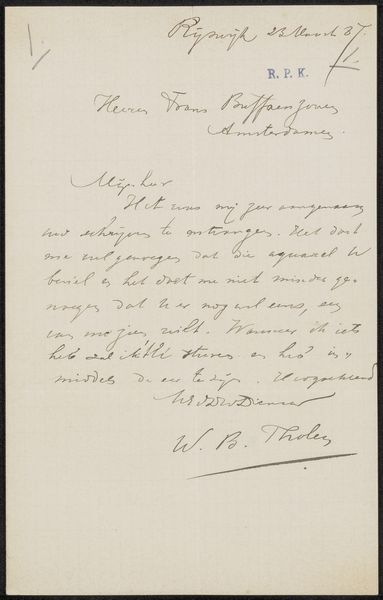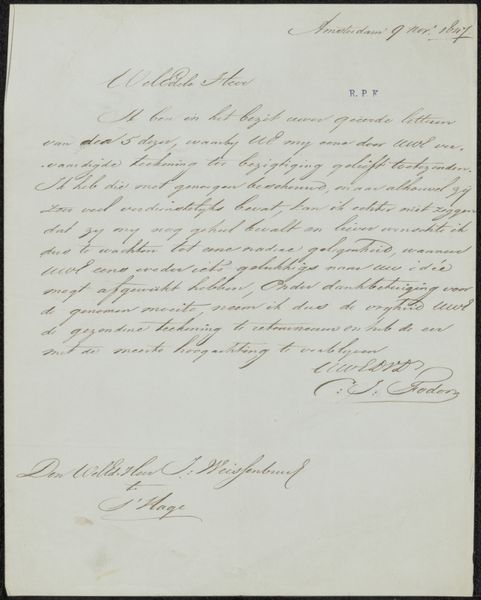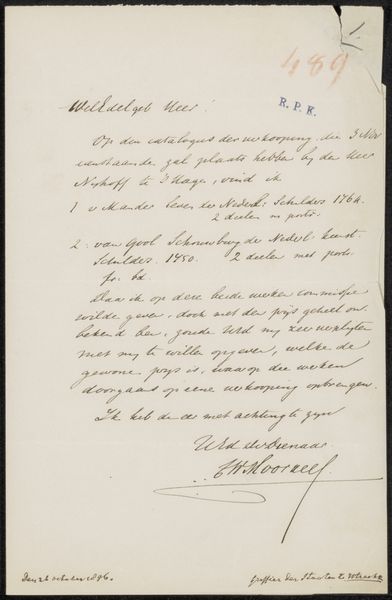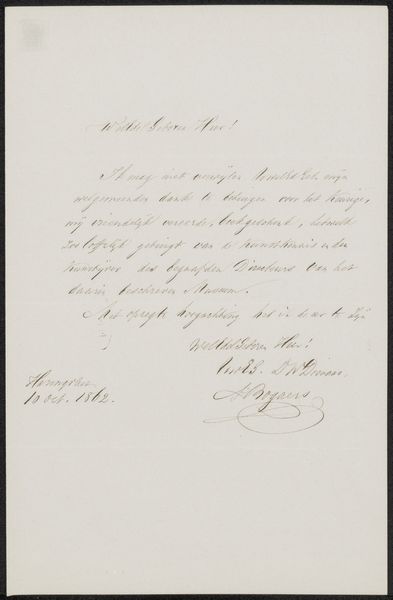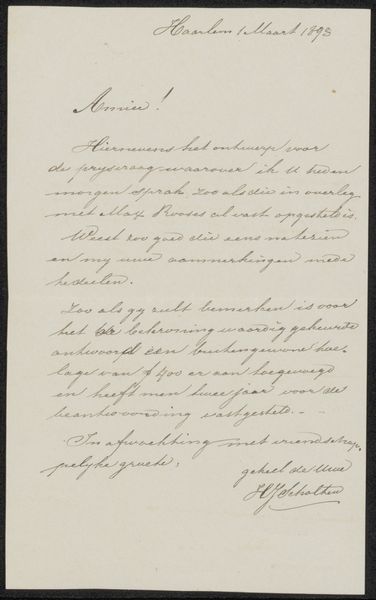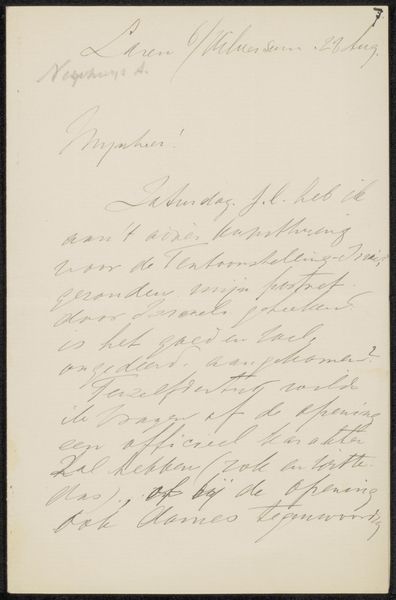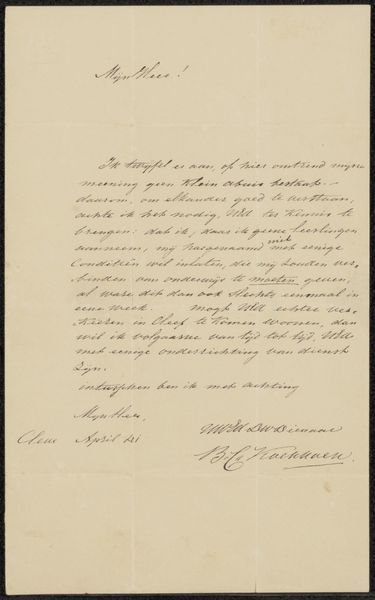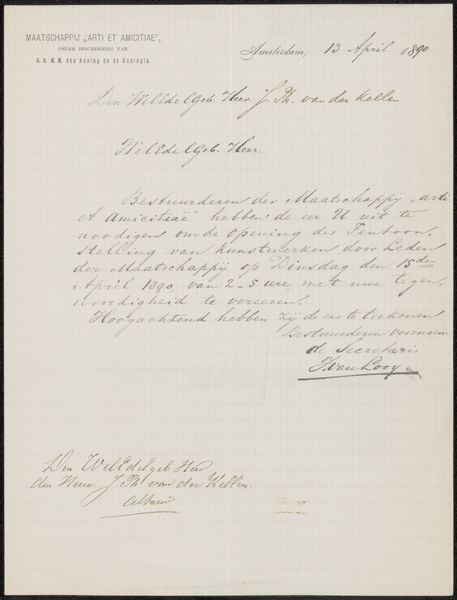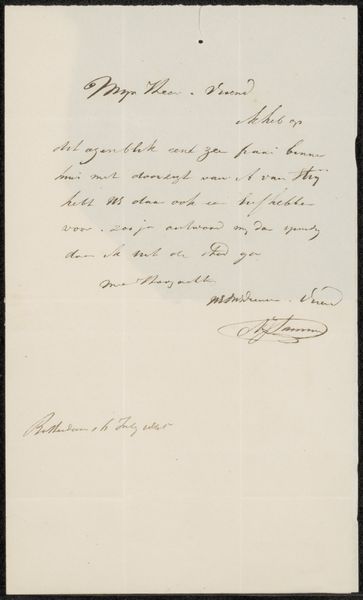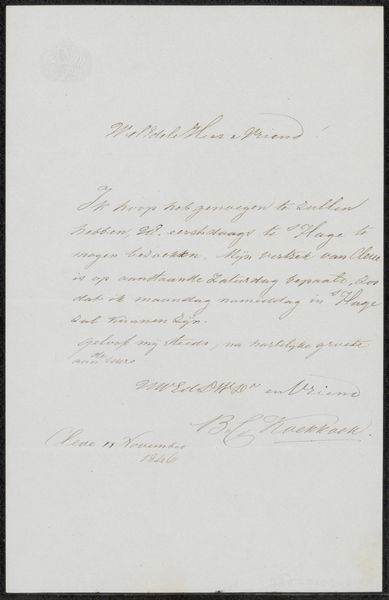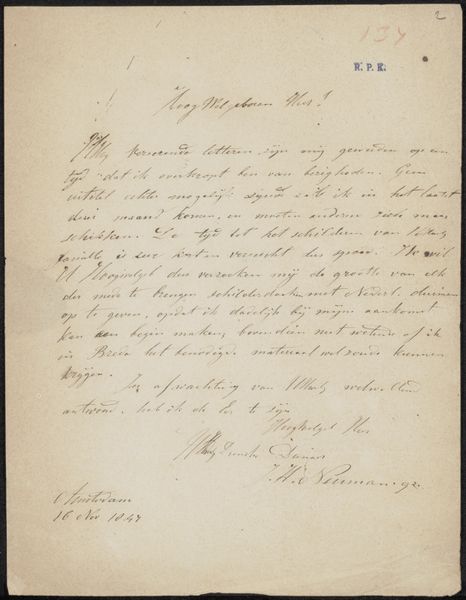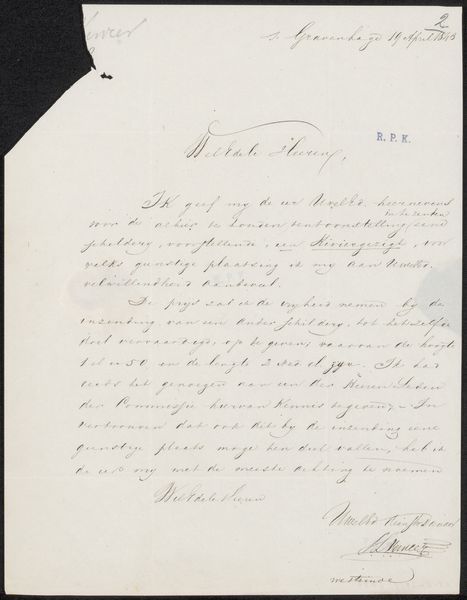
Brief aan jonkheer Jacob Eduard van Heemskerck van Beest Possibly 1866
0:00
0:00
drawing, paper, ink, pen
#
drawing
#
ink drawing
#
pen sketch
#
paper
#
ink
#
pen
#
calligraphy
Copyright: Rijks Museum: Open Domain
Curator: This intriguing pen and ink drawing, "Brief aan jonkheer Jacob Eduard van Heemskerck van Beest," is thought to be from 1866, crafted by Christiaan Wilhelmus Moorrees. It's a letter, really, on paper. It has a beautifully aged quality to it. Editor: My first impression is… intimate. I see history and delicate lines dancing across the page. The texture, even virtually, gives it such a poignant feel. It is a simple composition, just text on paper, but it holds so much vulnerability and care. Curator: Definitely! It's like a secret whispered through time. Given its handwritten nature, it provides a unique window into the author’s mindset. These personal documents often challenge our notions of who got to participate in creating the public historical record. Editor: Exactly. I am curious to know the social hierarchy that structures this letter. It could represent not only personal exchange but also reinforces relationships of power. The flowy calligraphic forms belie the structures of the time period in which this letter was created. Curator: You're right to point out the complexities embedded in the document. The style, with its flowing script and formal address, contrasts with the underlying anxieties we can assume about missing an important social dinner engagement. Editor: It's also a study in class and obligation. We read about him saying that he will be missing the dinner. But think about how important that invitation must be! To address missing this is a message within itself. What statements are said and unsaid here. Curator: Perhaps! It’s always interesting to try to imagine the unsaid motivations, and relate that to our modern social experiences and faux pas. How much does technology assist us in communicating in contrast? Or is the real work in how we show up in public social spaces like that dinner invitation. Editor: I find myself deeply connected to how one single piece of paper embodies power structures, communication expectations, and the weight of personal responsibility. Curator: I’m struck by how Moorrees’s act of documenting regret also preserved his story for our curious eyes generations later, highlighting a powerful interplay between private gestures and public memory.
Comments
No comments
Be the first to comment and join the conversation on the ultimate creative platform.

